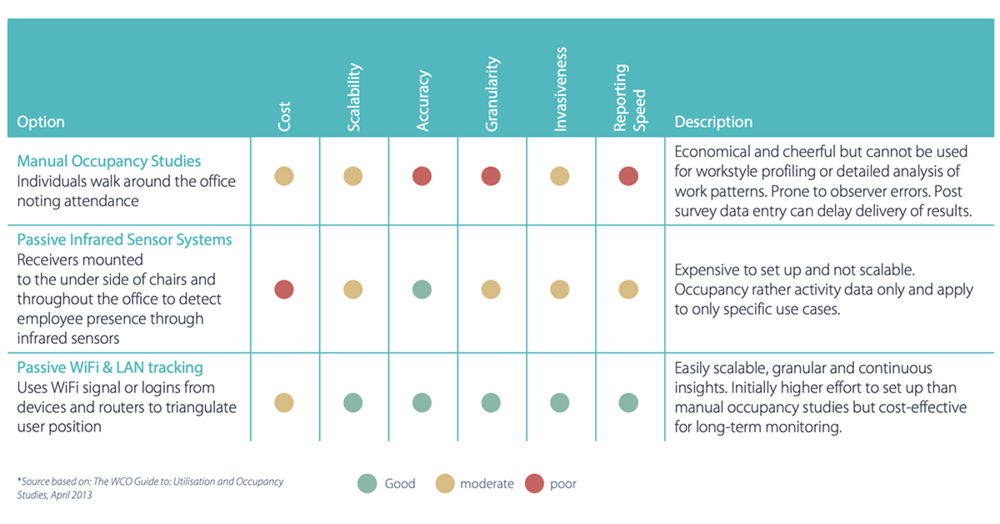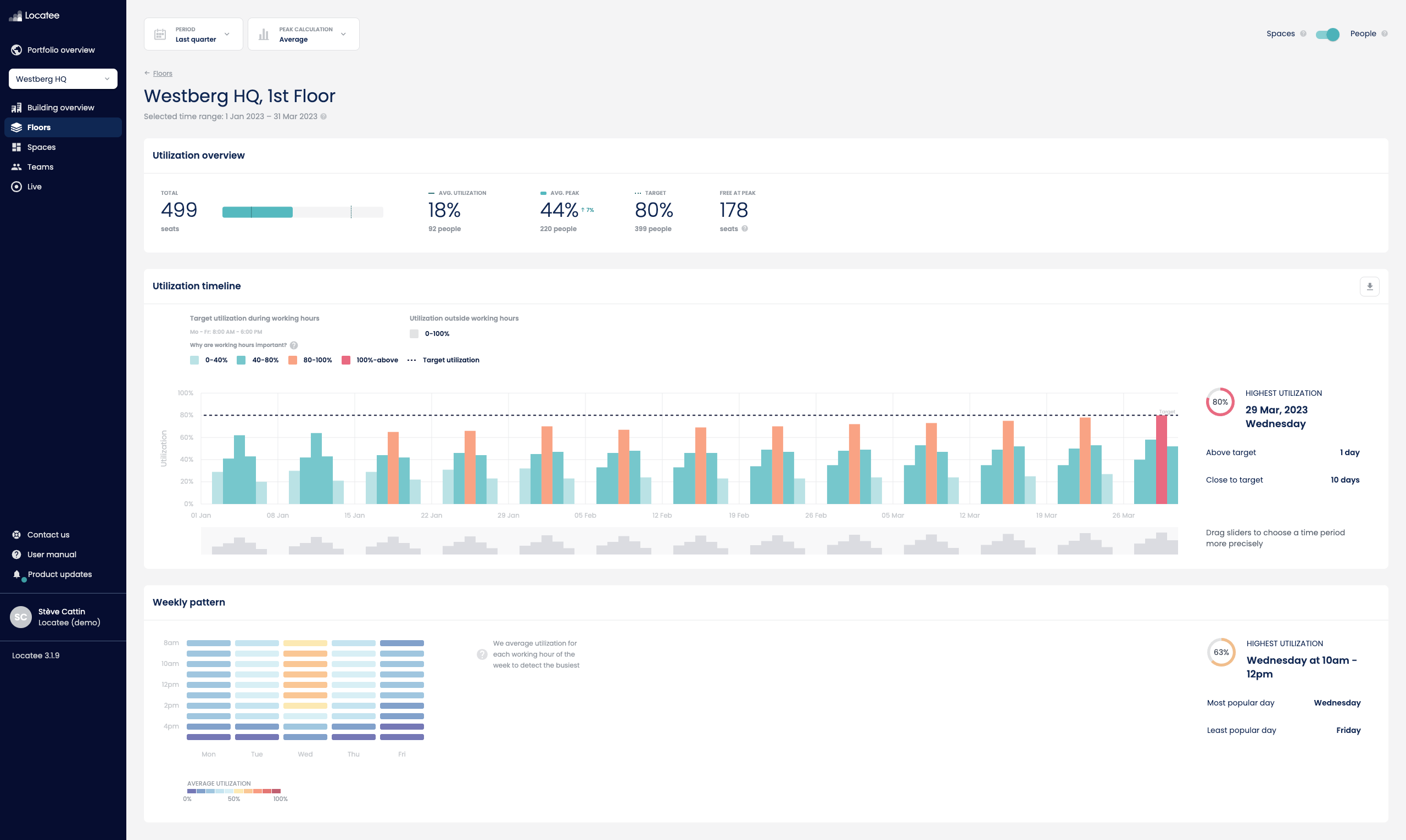Today, many organisations are interested in making fact-based decisions to change their workspaces and a large number of them are already investing in utilisation studies. To identify consolidation potential, optimise workspace concepts and align workspace demands with the business needs, decisions need to be based on data that is accurate, complete, consistent, and continuous.
Why Manual Occupancy Studies Are Outdated
When choosing a measurement method (read our previous blog post to discover the different types), companies often rely on manual occupancy studies. Manual studies are conducted by individuals walking through office spaces at predefined times, to observe the attendance of employees. Beforehand, a set of characteristics to be measured are defined.
Manual occupancy studies pose the following limitations:
- The accuracy and reliability are fully dependent on the observations of the conductor(s) of the study
- The studies are conducted over a short period of time, therefore cannot provide any information on seasonality and fluctuations
- Interpretation of the data is up to the observer, hence it is not objective and prone to errors
- If requirements change, the data fails to reflect the changes
- Translation of collected data into valuable insights is time-consuming and static
- Results are not delivered in real-time
- Global scalability over a portfolio of dozens or even hundreds of buildings requires an immense number of observers and therefore a lot of investments
Organisations which conduct manual occupancy studies, base their operational and strategic decisions on a limited set of information. Basing further activities on this data may have a negative short- and long-term outcome for investments because the data is not real-time and does not represent the dynamic of the workplace and employees.
Why Digitise Your Space Utilisation Studies?
Dismissing manual occupancy studies and digitalising them, have the primary benefits of providing continuous, reliable, objective and real-time insights:
- The insights are scalable because data can be measured and benchmarked over the entire real estate portfolio
- You can continuously identify savings potential and trends in space utilisation without neglecting long-term employee satisfaction
- Corporate Real Estate Managers are able to discuss business needs with the objective data to back up the decisions
- The real-time and continuous insights allow newly introduced work concepts to be verified without the need for additional investments
- The continuous analyses of data over a long period of time facilitate predictions by means of identifying patterns, trends, and seasonality
How to Digitise Your Space Utilisation Studies
In general, organisations already have access to many data sources such as LAN ports, WiFi access points or sensors. The best solution is to leverage these already existing sources and therefore only have a marginally increased initial effort compared to manual occupancy studies. Furthermore, the return on investment is increased greatly due to the quality, versatility and global scalability of the data. Software-approaches enable you to continuously adapt your measurements depending on which use cases you have. A crucial factor is that the solution is GDPR-compliant and can be adapted to your company’s as well as employees’ dynamic needs.
Key takeaways
So why do companies in a digital world still conduct manual studies? Manual occupancy studies are budgetable, easy to implement, and seem to be the simplest answer to a complicated question.
We at Locatee are convinced that organisations should not waste investments on time-consuming, inaccurate manual occupancy studies that yield low to now returns. By digitising space utilisation studies, organisations make use of their existing data sources while investing in a scalable and future-proof solution that reflects the modern office spaces organisations offer their employees. Deciding on a solution that actually provides meaningful data translates directly into providing the best work environment for your employees, while at the same time meeting your business’s needs.


 3’
3’




